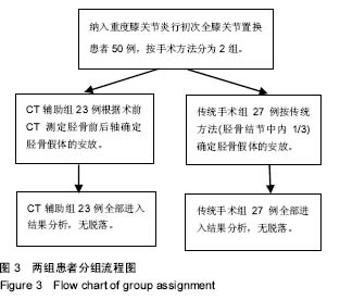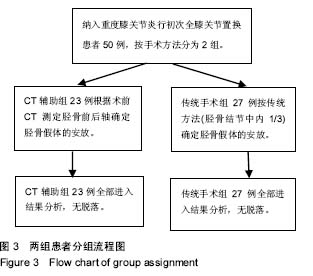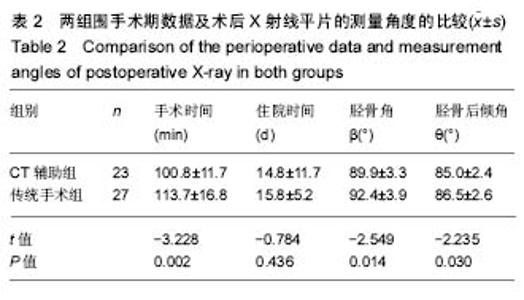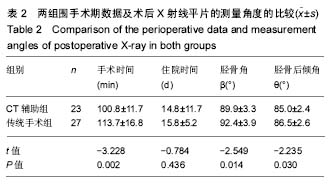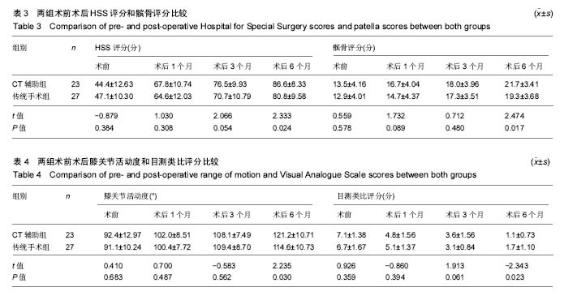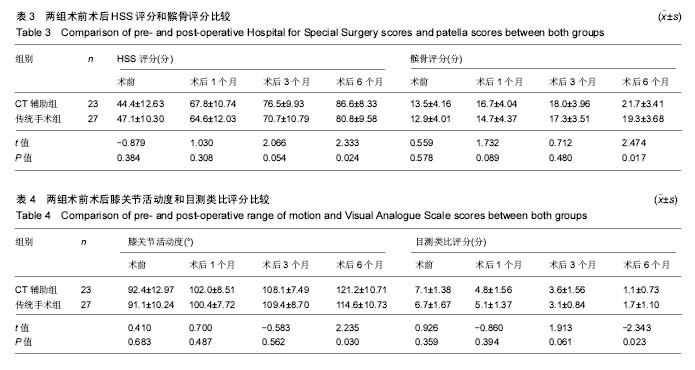| [1] Nilsdotter AK, Toksvig-Larsen S, Roos EM. Knee arthroplasty: are patients' expectations fulfilled? A prospective study of pain and function in 102 patients with 5-year follow-up. Acta Orthop. 2009;80(1):55-61.[2] 吕厚山,袁燕林,寇伯龙,等. 1202个人工膝关节置换术的临床特点分析[J]. 中华骨科杂志, 2001,21(12):710-713.[3] 傅东红. 我国人工膝关节置换技术取得重要成果[J]. 北京大学学报(医学版), 2003,35(2):186.[4] Terashima T, Onodera T, Sawaguchi N, et al. External rotation of the femoral component decreases patellofemoral contact stress in total knee arthroplasty. Knee Surg Sports Traumatol Arthrosc.2015;23(11):3266-3272.[5] Churchill DL, Incavo SJ, Johnson CC, et al. The transepicondylar axis approximates the optimal flexion axis of the knee. Clin Orthop Relat Res. 1998;(356):111-118.[6] Asano T, Akagi M, Nakamura T. The functional flexion-extension axis of the knee corresponds to the surgical epicondylar axis: in vivo analysis using a biplanar image-matching technique. J Arthroplasty. 2005;20(8): 1060-1067.[7] Aglietti P, Sensi L, Cuomo P, et al. Rotational position of femoral and tibial components in TKA using the femoral transepicondylar axis. Clin Orthop Relat Res. 2008;466(11): 2751-2755.[8] Petersen W, Rembitzki IV, Bruggemann GP, et al. Anterior knee pain after total knee arthroplasty: a narrative review. Int Orthop. 2014;38(2):319-328.[9] Boldt JG, Stiehl JB, Munzinger U, et al. Femoral component rotation in mobile-bearing total knee arthroplasty. Knee. 2006; 13(4):284-289.[10] Patel AR, Talati RK, Yaffe MA, et al. Femoral component rotation in total knee arthroplasty: an MRI-based evaluation of our options. J Arthroplasty. 2014;29(8):1666-1670.[11] Sugimura N, Ikeuchi M, Izumi M, et al. The dorsal pedis artery as a new distal landmark for extramedullary tibial alignment in total knee arthroplasty. Knee Surg Sports Traumatol Arthrosc. 2014;22(11):2618-2622.[12] Sun T, Lv H, Hong N. Rotational landmarks and total knee arthroplasty in osteoarthritic knees. Zhongguo Xiu Fu Chong Jian Wai Ke Za Zhi. 2007;21(3):226-230.[13] Akagi M, Oh M, Nonaka T, et al. An anteroposterior axis of the tibia for total knee arthroplasty. Clin Orthop Relat Res. 2004; (420):213-219.[14] Tao K, Cai M, Li SH. The anteroposterior axis of the tibia in total knee arthroplasty for Chinese knees. Orthopedics. 2010; 33(11):799.[15] Kim CW, Seo SS, Kim JH, et al. The anteroposterior axis of the tibia in Korean patients undergoing total knee replacement. Bone Joint J. 2014;96-B(11):1485-1490.[16] Kawahara S, Matsuda S, Okazaki K, et al. Relationship between the tibial anteroposterior axis and the surgical epicondylar axis in varus and valgus knees. Knee Surg Sports Traumatol Arthrosc. 2012;20(10):2077-2081.[17] Kawahara S, Okazaki K, Matsuda S, et al. Medial sixth of the patellar tendon at the tibial attachment is useful for the anterior reference in rotational alignment of the tibial component. Knee Surg Sports Traumatol Arthrosc. 2014; 22(5):1070-1075.[18] Clarke HD. Limb alignment improves with computer-assisted navigation in total knee replacement, but questions remain. J Bone Joint Surg Am. 2011;93(13):e77.[19] Desai AS, Dramis A, Kendoff D, et al. Critical review of the current practice for computer-assisted navigation in total knee replacement surgery: cost-effectiveness and clinical outcome. Curr Rev Musculoskelet Med. 2011;4(1):11-15.[20] Venkatesan M, Mahadevan D, Ashford RU. Computer-assisted navigation in knee arthroplasty: a critical appraisal. J Knee Surg. 2013;26(5):357-361.[21] Dyrhovden GS, Fenstad AM, Furnes O, et al. Survivorship and relative risk of revision in computer-navigated versus conventional total knee replacement at 8-year follow-up. Acta Orthop. 2016;87(6):592-599. |
